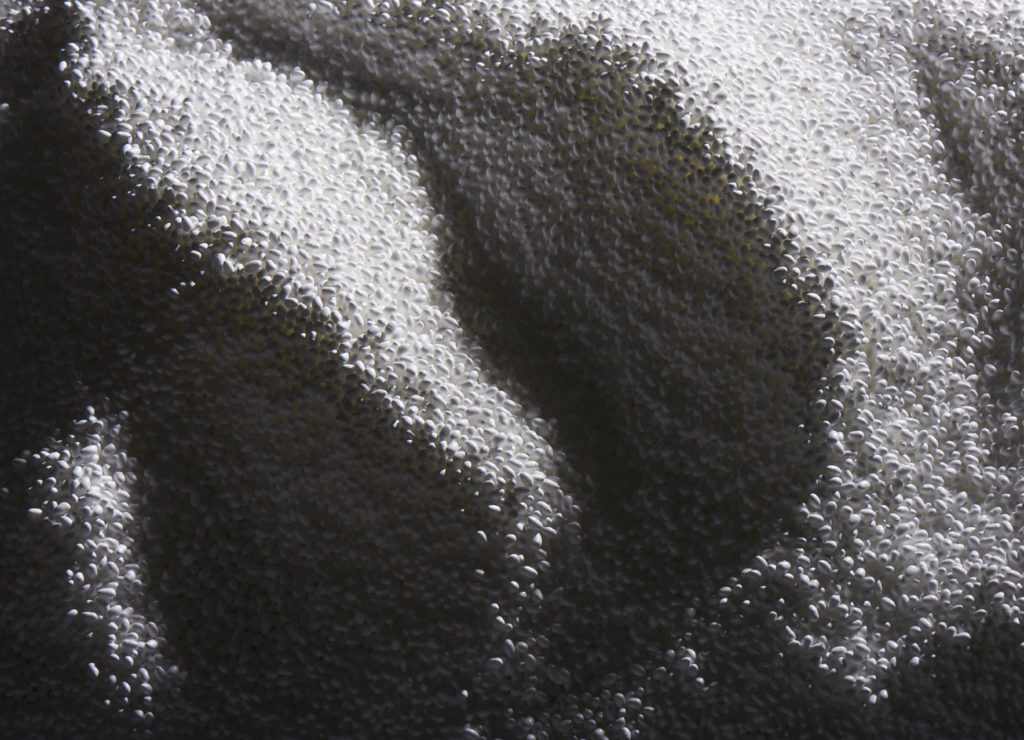According to BASF, its expanded thermoplastic polyurethane (E-TPU) Infinergy created a real stir when it was launched on the market in the adidas Boost running shoe, because it introduced a completely new class of particle foams to the plastics market. Today, customers from a wide range of different industries use the material – from comfortable safety footwear and a dynamic tennis racket to a cushioning sports floor. At K 2019, the material was presented with a multitude of its applications and innovative approaches. Infinergy is used, for example, in the Vision Venture, a camper van from Hymer, as a step, bed edge and as a comfort element in the slatted frame.
The mini beads are less than half the size of normal Infinergy beads: They have a diameter of between approximately 2.5 mm and 3.5 mm. These beads are deployed wherever the filling behaviour of the standard product reaches its limits, for example for thin-walled parts. Besides their reduced size, the round shape of the particles also helps to improve the filling behaviour, enabling thin bars in the mould to be easily filled. Users do not have to compromise on the material properties, for example on the excellent rebound, said BASF. The mini beads are already used for vibration dampers in compressors and on bicycle saddles.

Ergon, which in 2017 became the first company to launch Infinergy in a bicycle saddle – the Ergon ST Core Prime – now relies on the mini beads. An E-MTB saddle and a city saddle complete the range of bicycle saddles with an Infinergy core. Andreas Krause, Head of Technical Development at Ergon, said: “The mini beads provide us with completely new options for product development and component design. The new product allows us to create much more slender component shapes which now also enable us to realise saddles in the sports market segment. In particular the saddle nose, which has thinner walls and sharper contours, can now be engineered with a slender, intricate design.”
The material was previously only available in the colour white. This is now changing with the first black Infinergy. It is suitable in particular for technical applications where the surface is heavily susceptible to dirt. “We are opening up new possibilities for our customers with the black Infinergy,” said Thomas Stührenberg, BASF’s Head of Marketing for Europe. “There are fundamentally no limits on the range of colours – we want to work with our customers to make the Infinergy range even more colourful in the future.”
According to the manufacturer, conventionally the processing of particle foams, including Infinergy, requires steam to weld the foams into a component. With high demands on the surface quality, this process soon reaches its limits, especially for components such as decorative applications. The reason: fewest of top-layers are vapour-permeable.
The start-up company Fox Velution, Lichtenfels, has developed a completely dry technology for processing particle foams to overcome exactly these limits and furthermore to significantly improve the energy-efficiency. Being variotherm, the technology makes applications for lightweight constructions with visible or tactile top layers, textile reinforcement and integrated inserts (electronics, assembly elements) possible. This opens up completely new options for decoration and functionalisation: LEDs incorporated into Infinergy foam panels light up the material and top layers such as colourful films or structured fabrics create new visions, said BASF.
